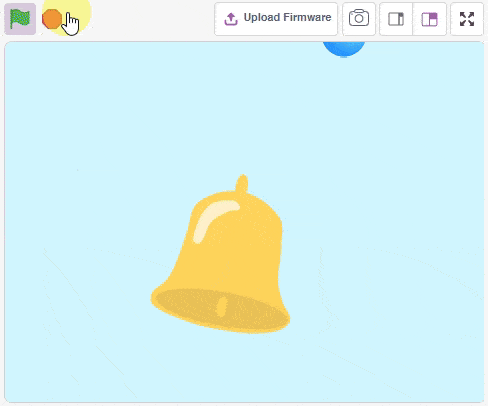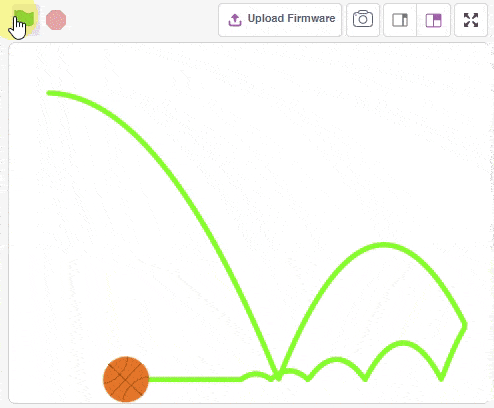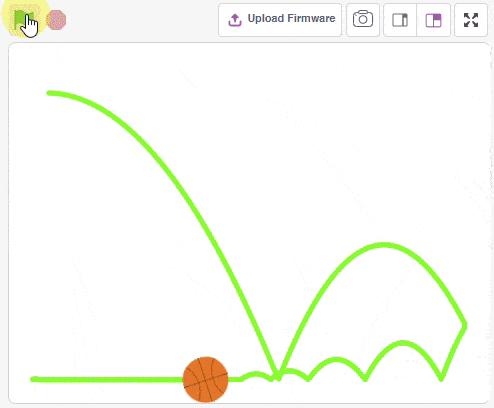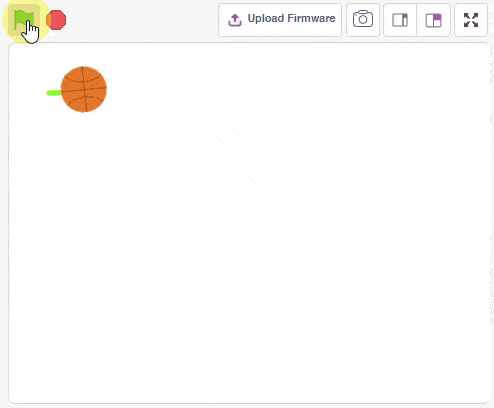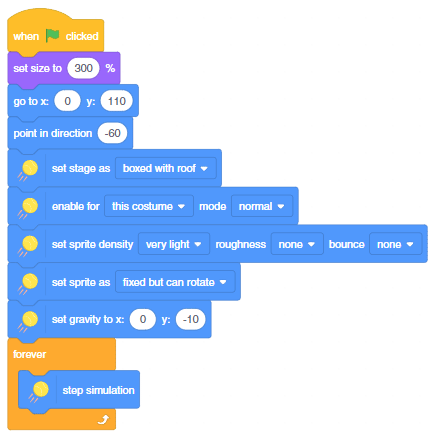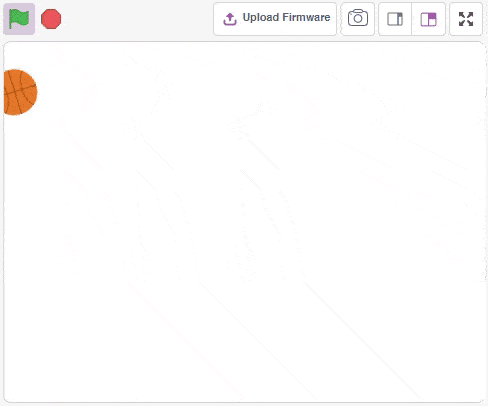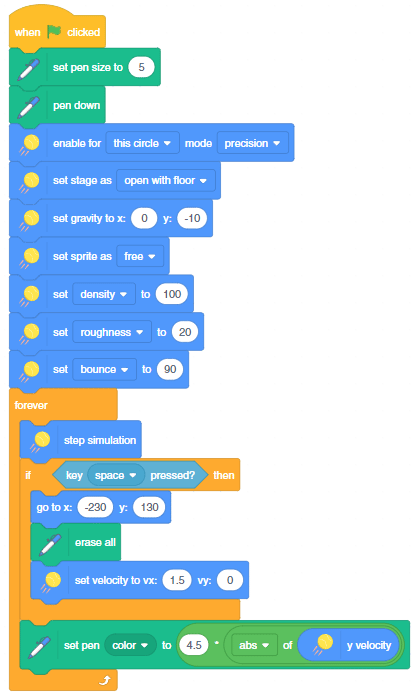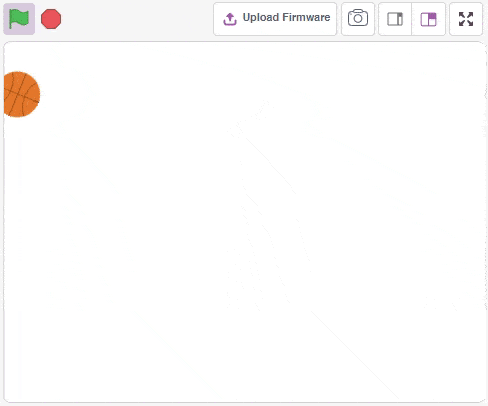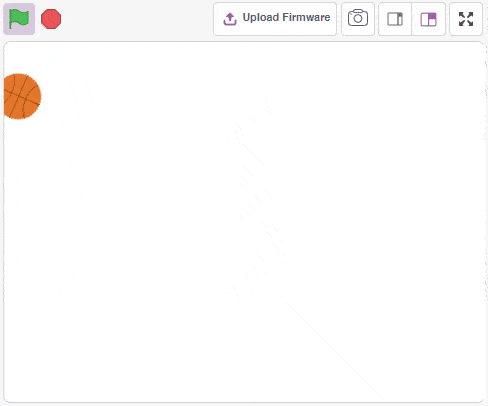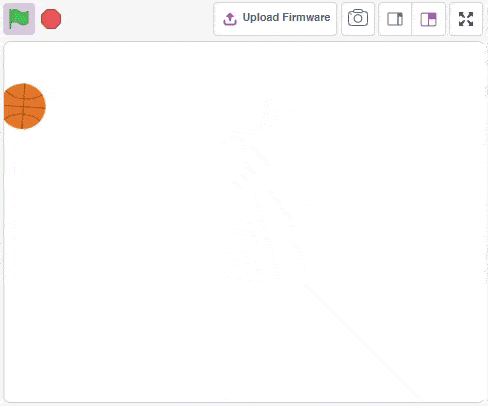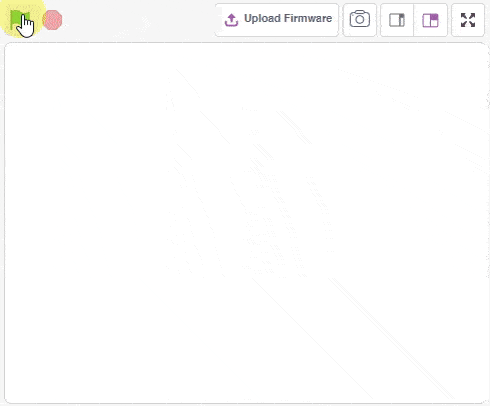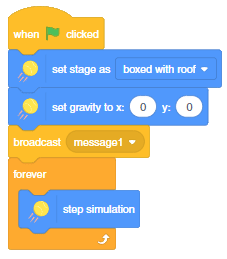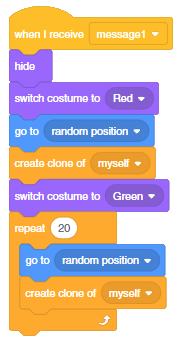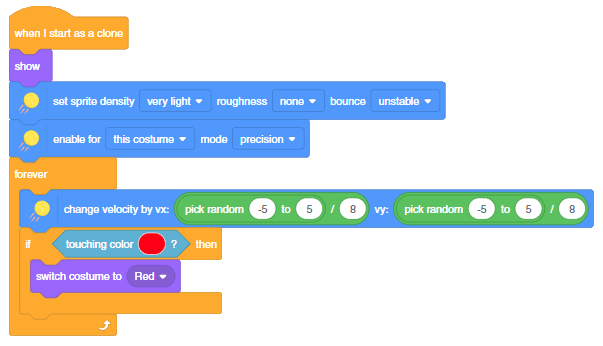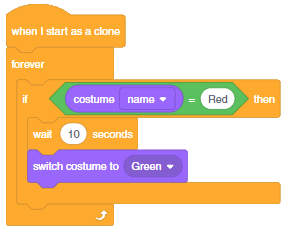In this example, you understand the effect of the density, roughness, and bounce properties of the sprites. The ball falls from the top randomly, and the bell is fixed but can rotate.
Script of Bell
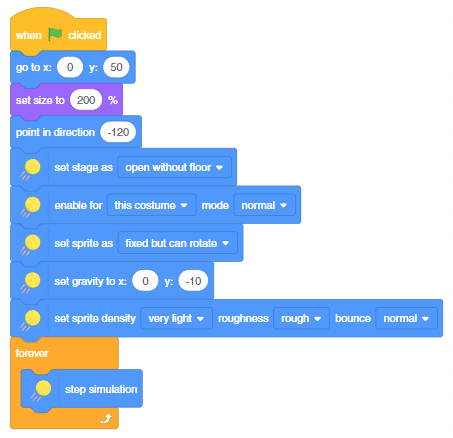
The bell center is changed to make it swing from the top.

Script for Ball
This script creates clones of the ball every 0.5 seconds.
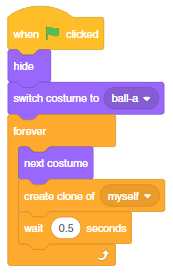
This script assigns the properties of the clone.
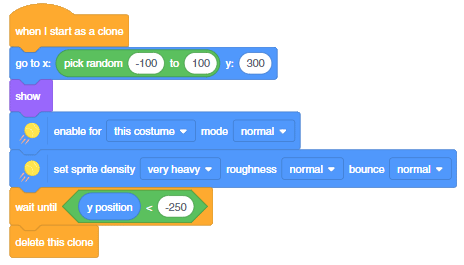
Output
We will change the density of the bell and the ball in the block – set sprite density () roughness () bounce (). This will result in different simulations.
- Bell is very light and the balls are very heavy: The inertia of the balls will affect the bell too much.
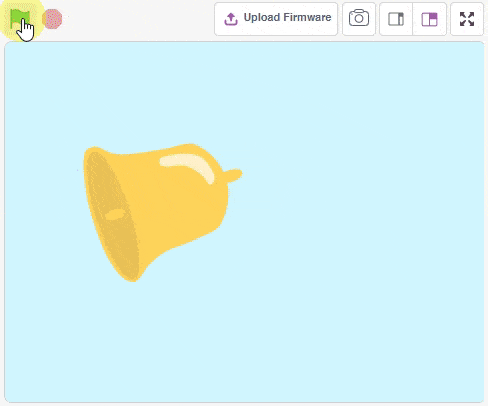
- Bell is very light and balls are also very light: The bell is less affected by the ball. Gradually the bell slows down.
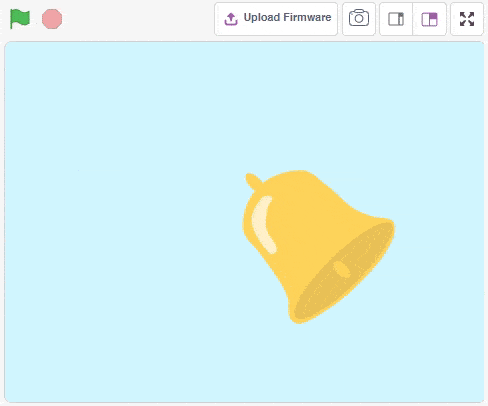
- Bell is very heavy and the balls are very light: The bell is not affected at all. The balls are thrown without adding any effect on the bell.

- Bell is very heavy and the balls are also very heavy: Same as option 2 – The bell is less affected by the ball. Gradually the bell slows down.
